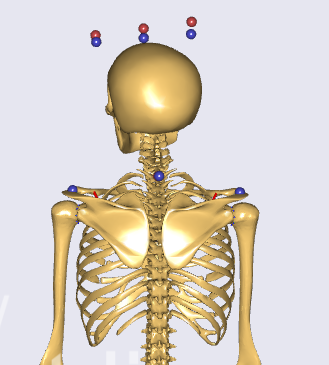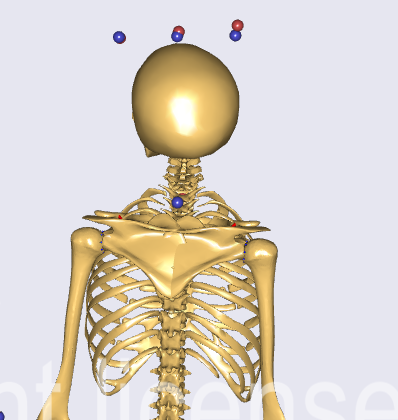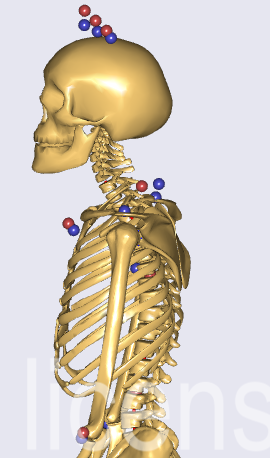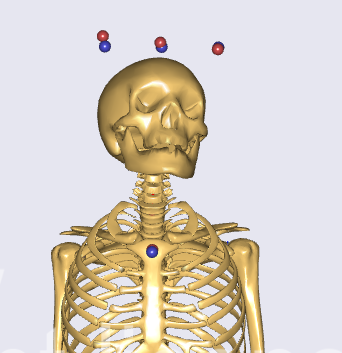Hello,
as part of a study investigating the load on the glenohumeral joint, we have developed a model based on BVH data. However, we have encountered an issue with the placement/movement of the shoulder, particularly the scapula, which appears to be positioned too low and too tightly, causing the shoulder blades to overlap. The body dimensions and the Xsens model look completely normal. This problem also occurs with other participants.
Our approach has been to try adjusting the relative positions of the marker drivers in the BVH (sRelOnBVH) at the shoulder and sternum to improve the posture, which has worked to some extent (see images), but it causes the overall movement to deviate from the original movement.
Therefore, we would like to know if there is a way to identify the cause of this issue, and if there are potentially other, more accurate solutions? Since we aim to investigate glenohumeral joint, accurately representing the anatomy of the participants is very important to us.
We also tried to find out wether changing the Anthropometrics Dimensions by using BM_SCALING_ANTHRO_FILE (which are close too our Measurements but not exact), but it did seem too fail because they are defined by the bvh data: ERROR(SCR.PRS20) : AnyMan.any(48) : 'PelvisWidth' : Illegal assignment: 'PelvisWidth' already assigned at : CalculateSegmentDimensionsFromBVH.any(7)
Did we make any mistake ore is it just possible by changing the body Dimensions directly in Xsens?
The Pictures show the "original" Model in Comparison to the adjusted one
 (adapted)
(adapted)
 (original)
(original)
 (adapted)
(adapted) (original)
(original)
I appreciate any advice on how to approach this further.
Best regards,
Anna
